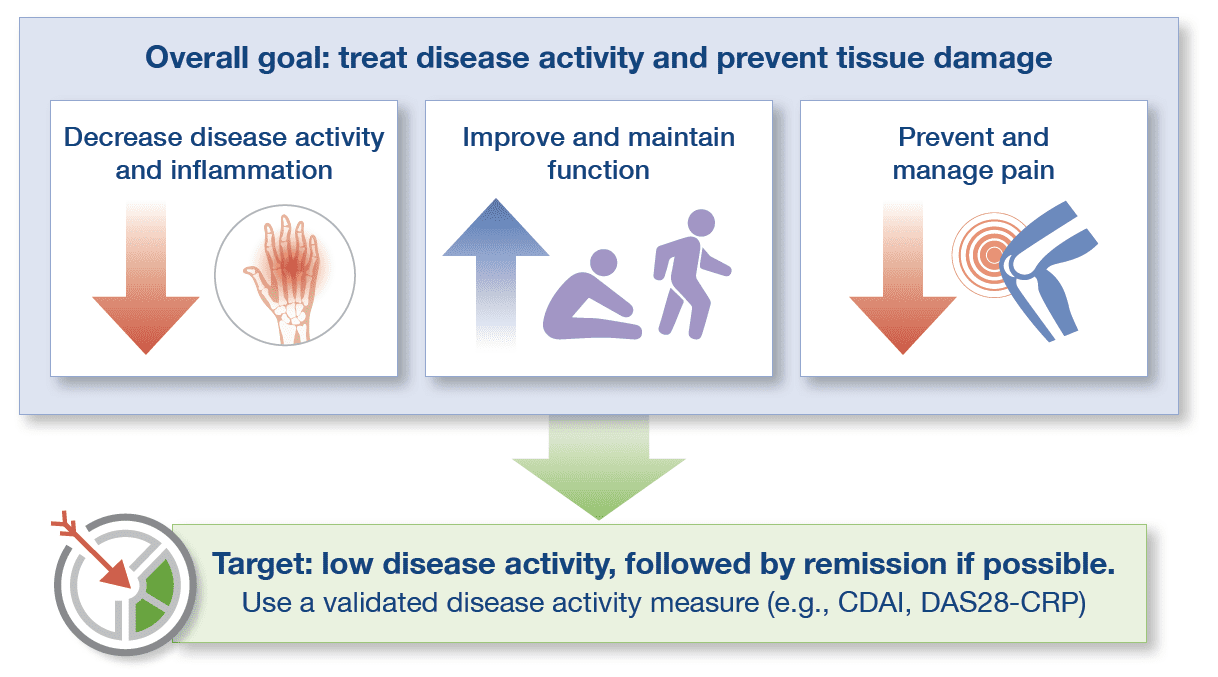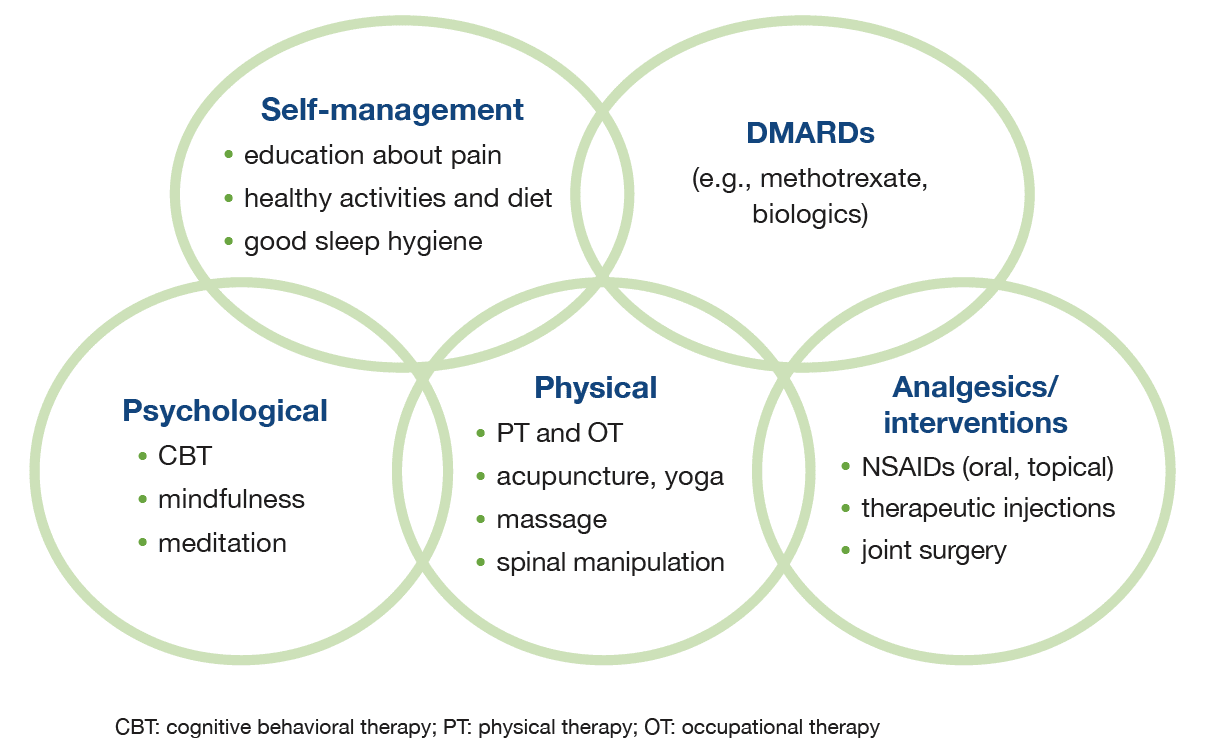Rheumatoid arthritis (RA) is a chronic, autoimmune, systemic inflammatory condition with inflammatory arthritis as its primary manifestation.1 The overall goals of treatment are to control inflammation in order to decrease disease activity, to improve function, and to manage pain.
The treat-to-target approach for patients with RA2

This module focuses two of the three pillars of management: the selection of evidence-based, non-pharmacologic and non-opioid pharmacologic treatment options to help alleviate pain and improve function in patients with RA and related conditions. Specific DMARD selection is beyond the scope of this module.
Patients with RA often rate pain as their most important symptom.3 Pain can also persist even among patients who have achieved inflammatory remission. Creating a pain management strategy from among a variety of evidence-based options can help.
A multi-modal approach to pain management in RA4

While opioids are not generally recommended to manage pain, for patients who require a trial of an opioid medication, ensuring safety is critical. These steps are recommended for all patients taking opioids:5
- Explain to patients that opioids do not treat disease activity
- Check the prescription drug monitoring program
- Establish a plan for opioid use
- Routinely assess the risk and benefits of opioid use
- Use caution when escalating doses above 50 mg morphine equivalents per day
- Continue to optimize non-opioid treatment options
- Reduce risk of misuse by recommending naloxone and talking about safe storage and disposal
Resources for Providers
- Clinical Disease Activity Index (CDAI)
- Disease Activity Score (DAS)-28
- Opioid Dose Calculator
- Opioid Toxicology Tools
Resources for Patients
Click here to contact us for more information about Alosa’s full academic detailing package.
